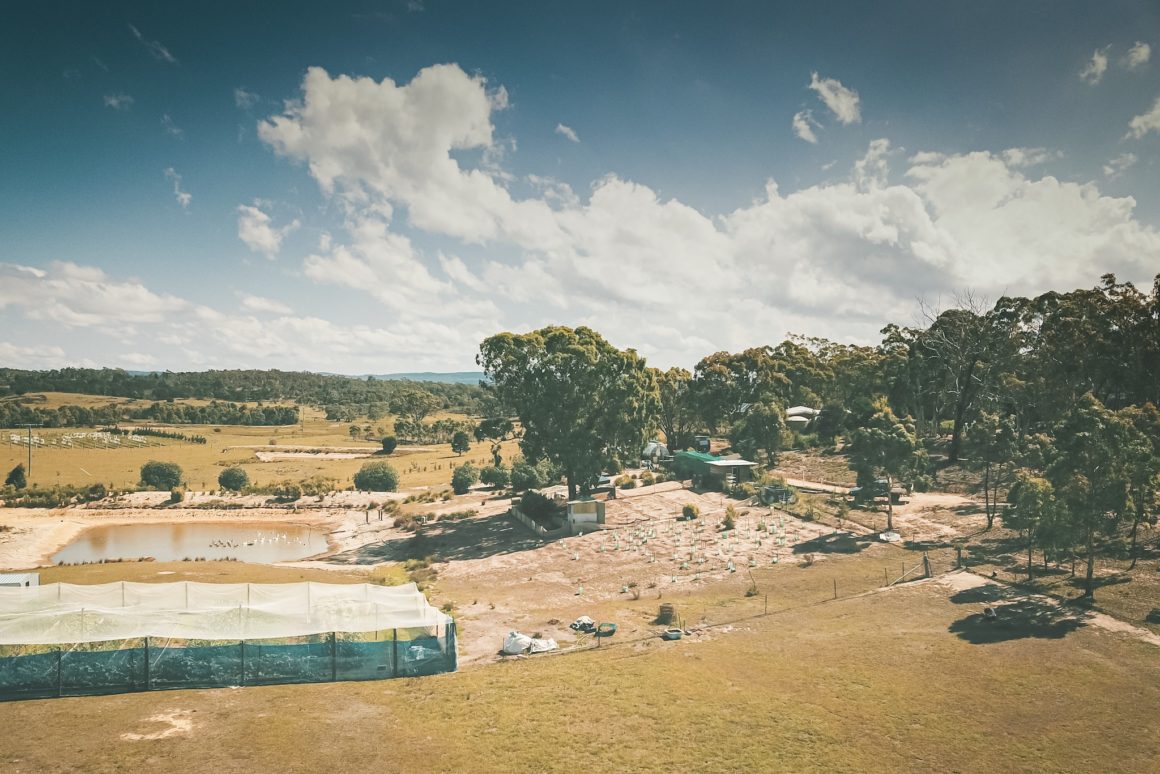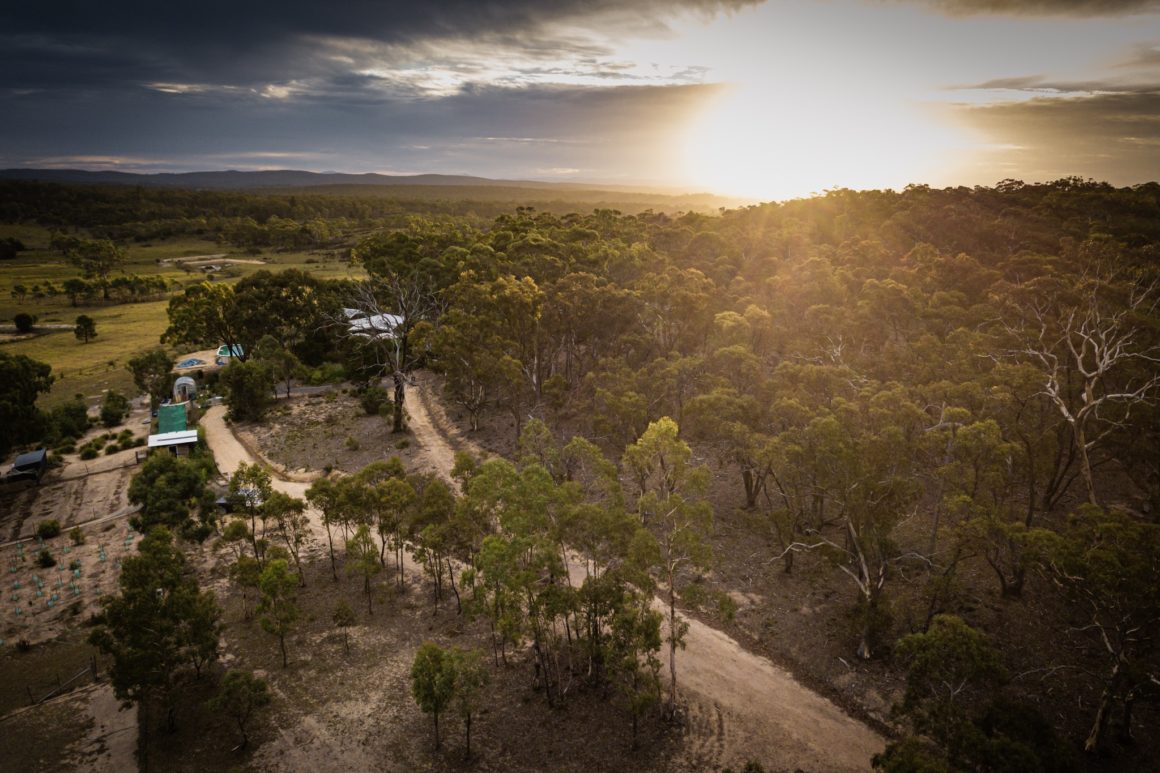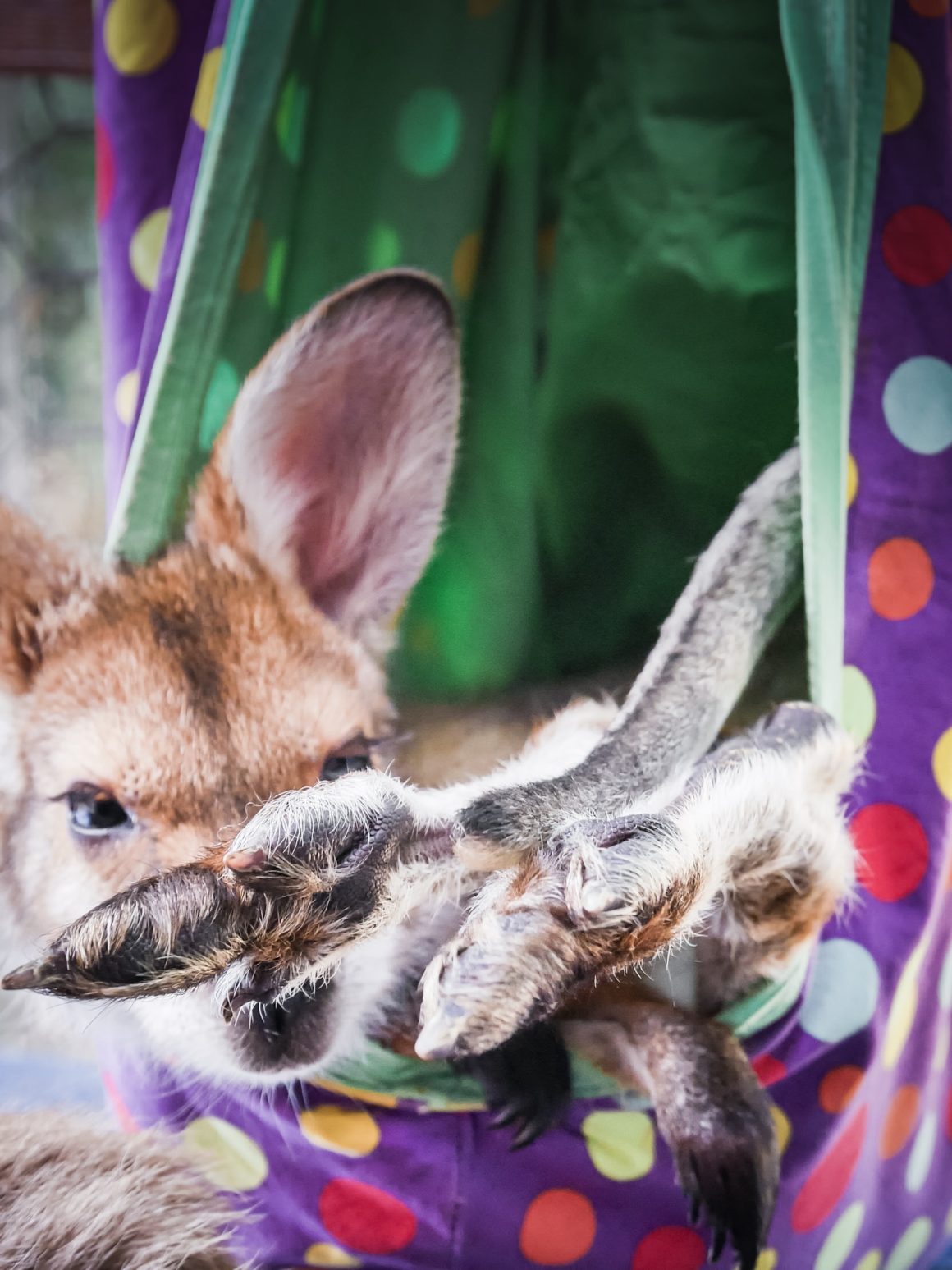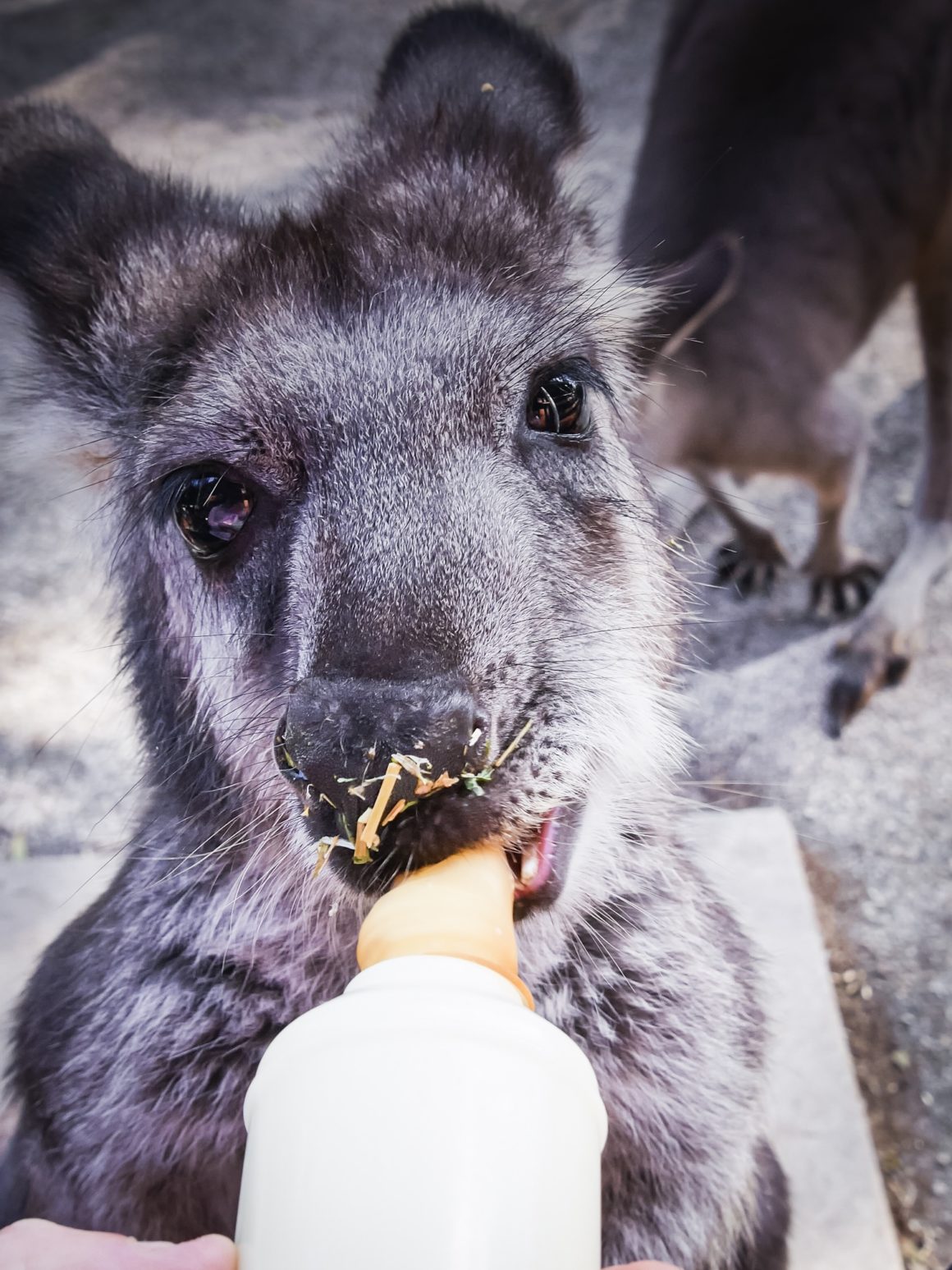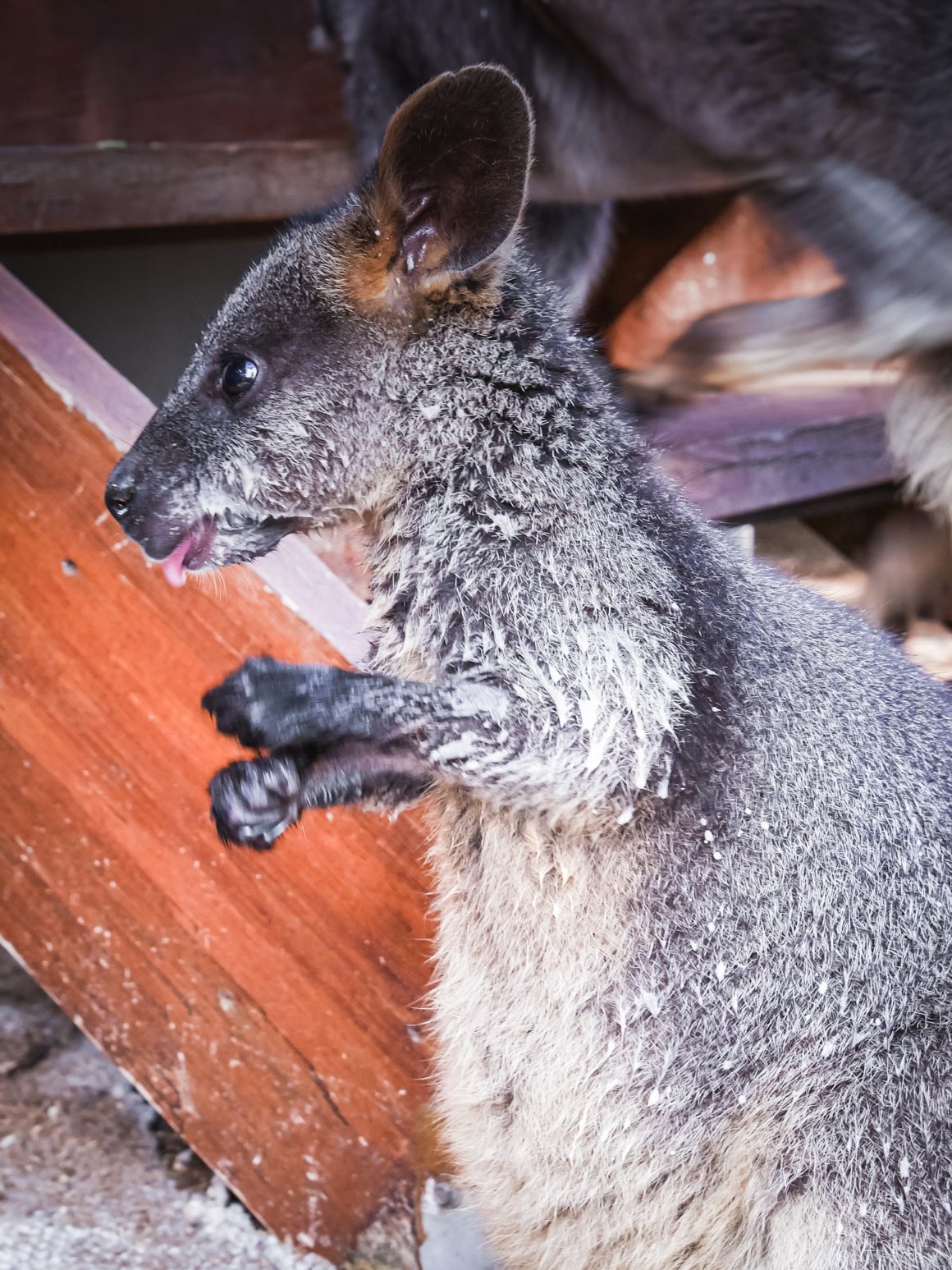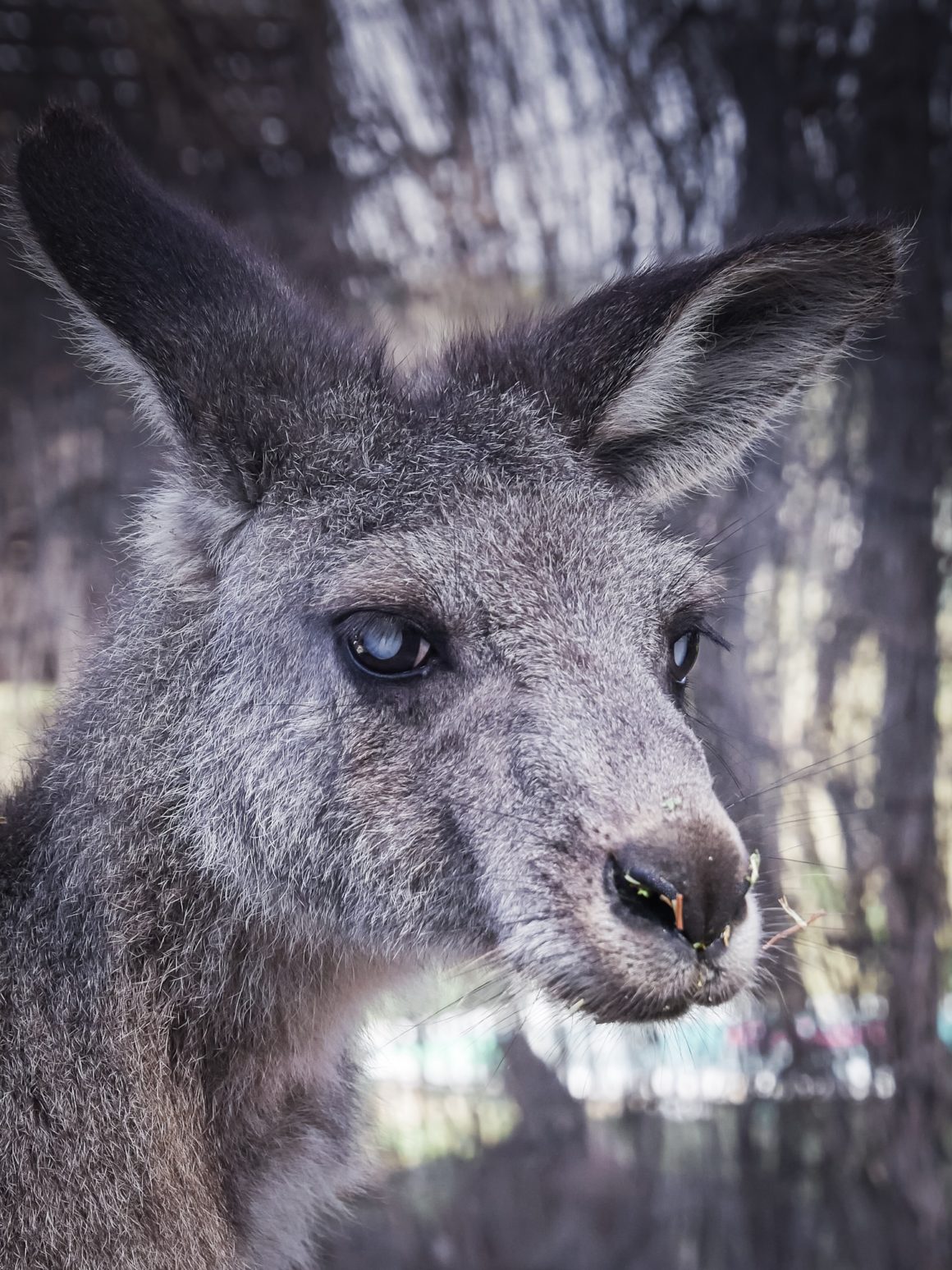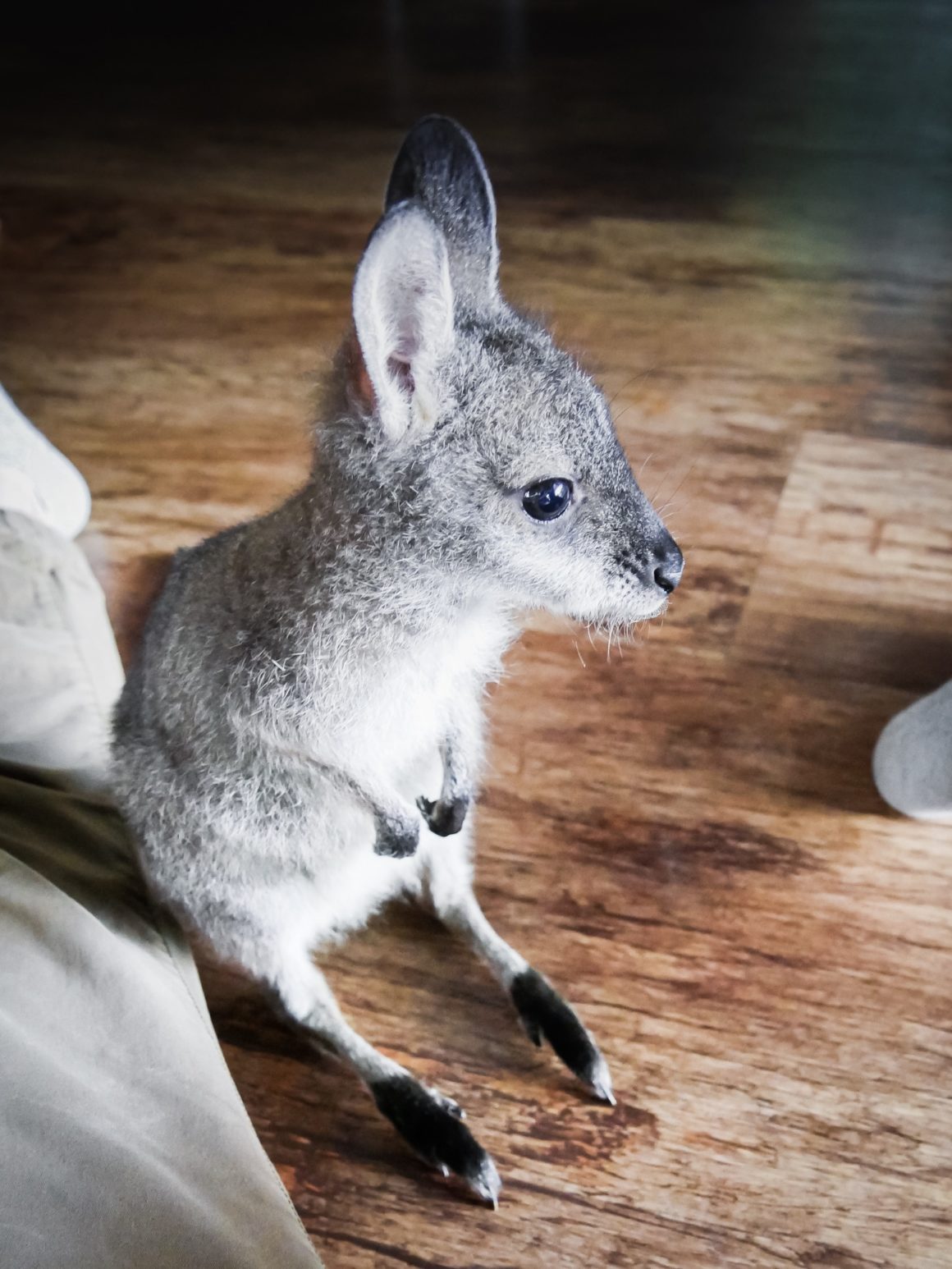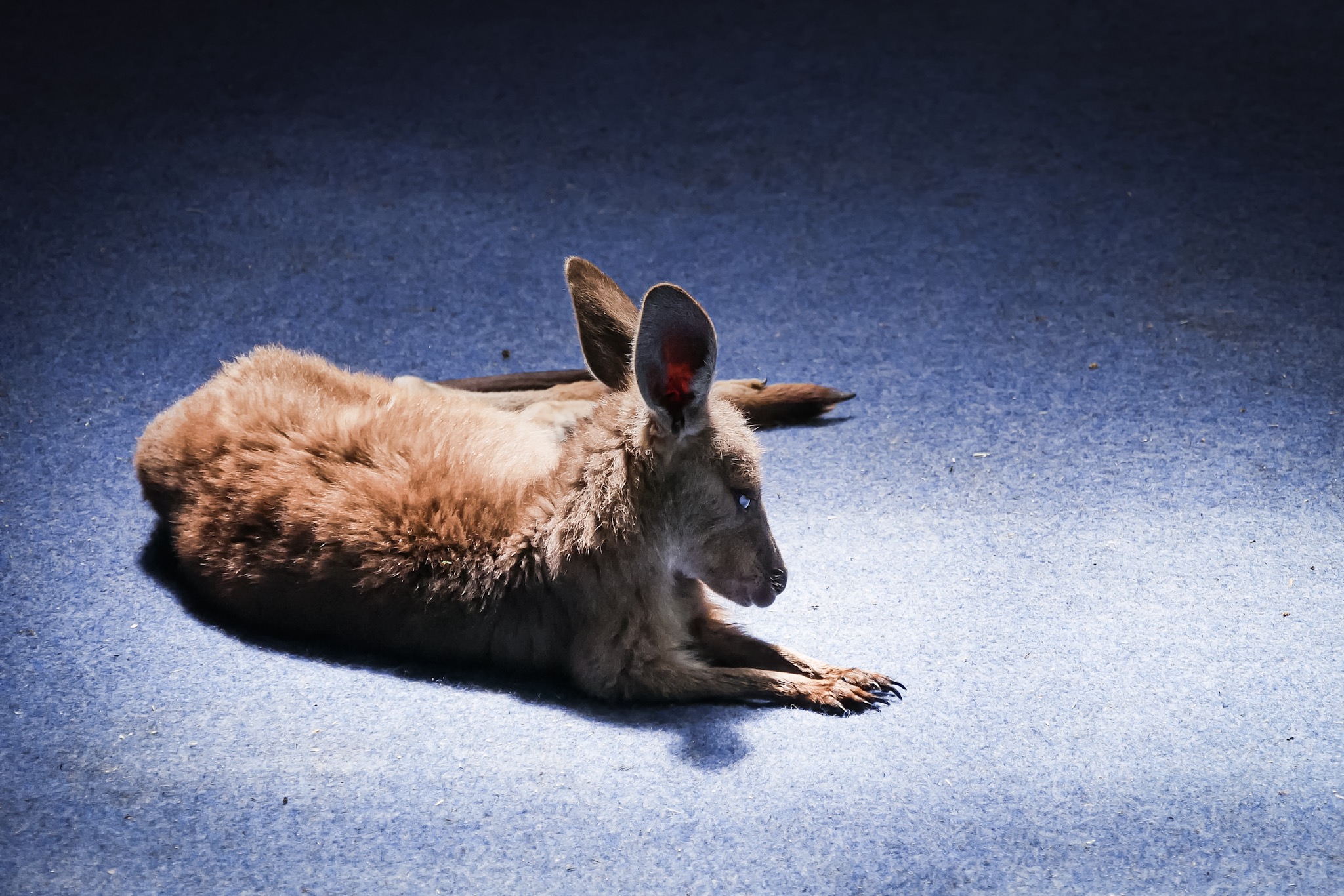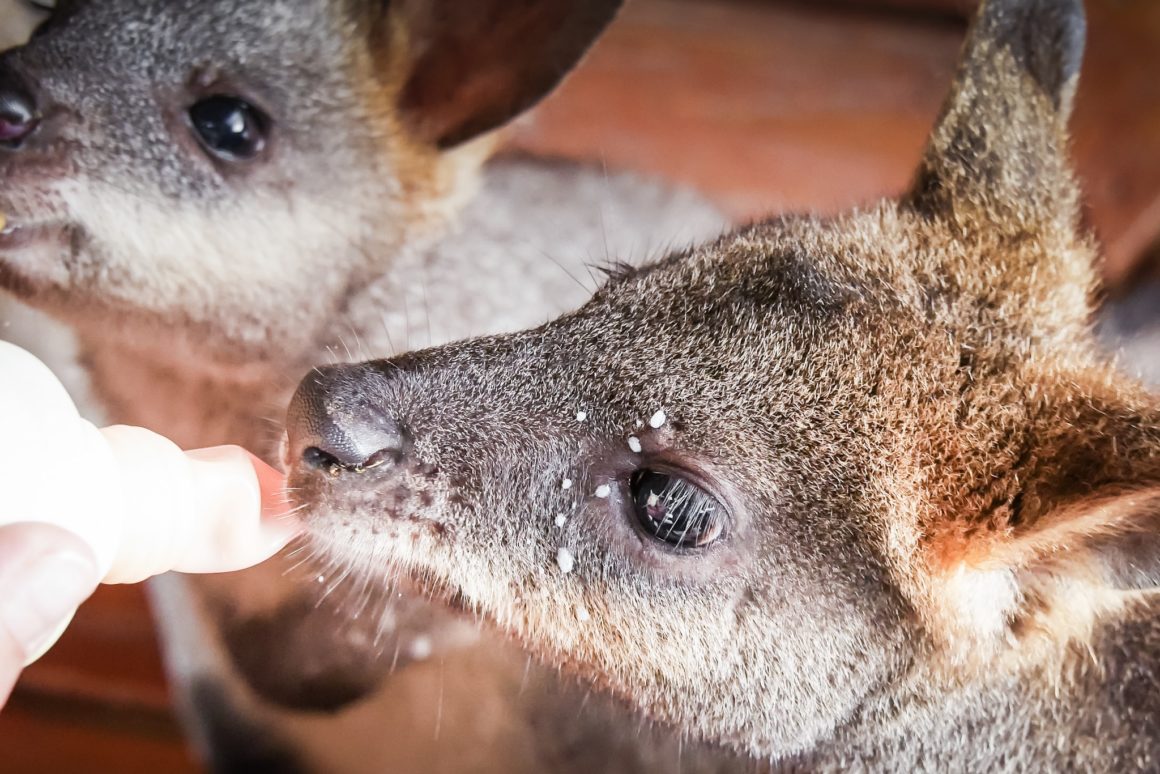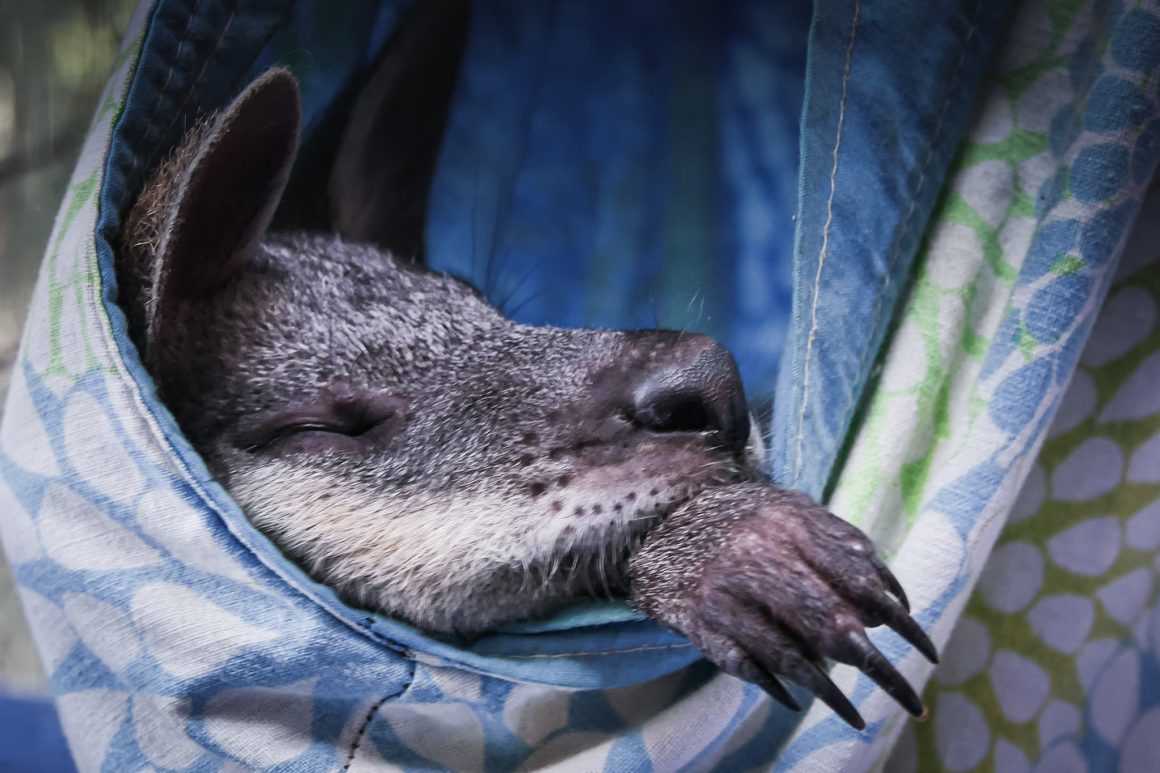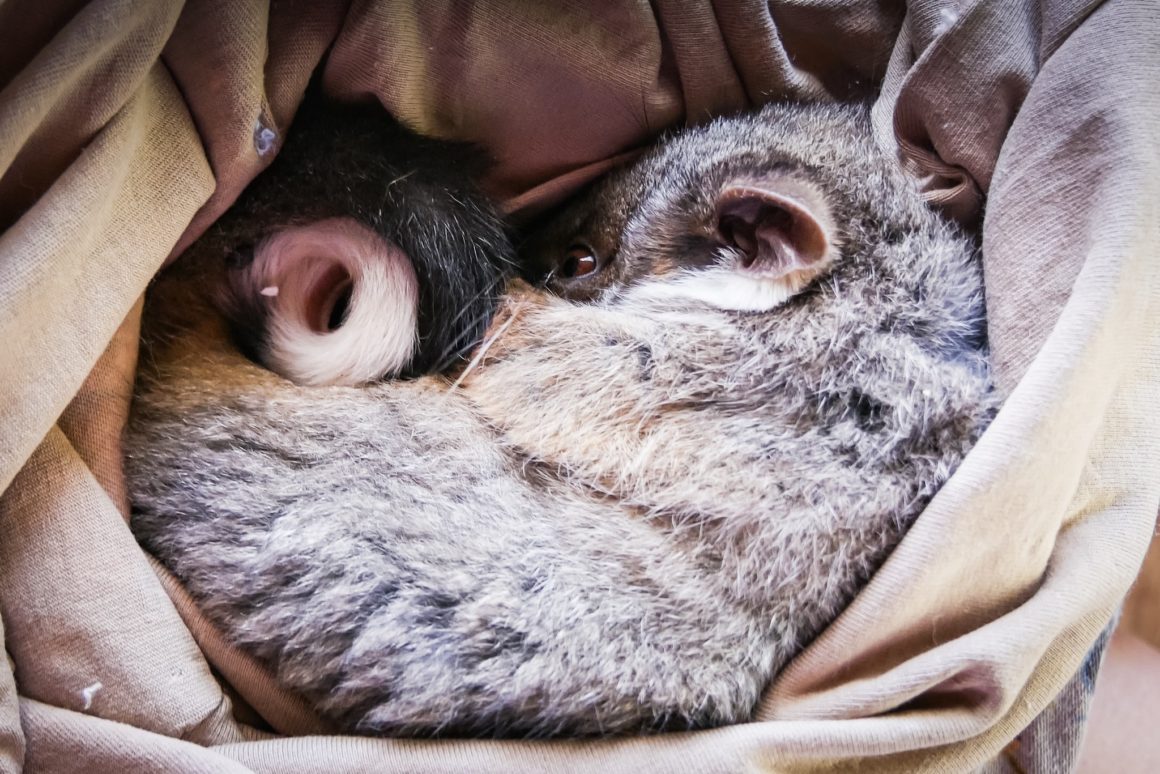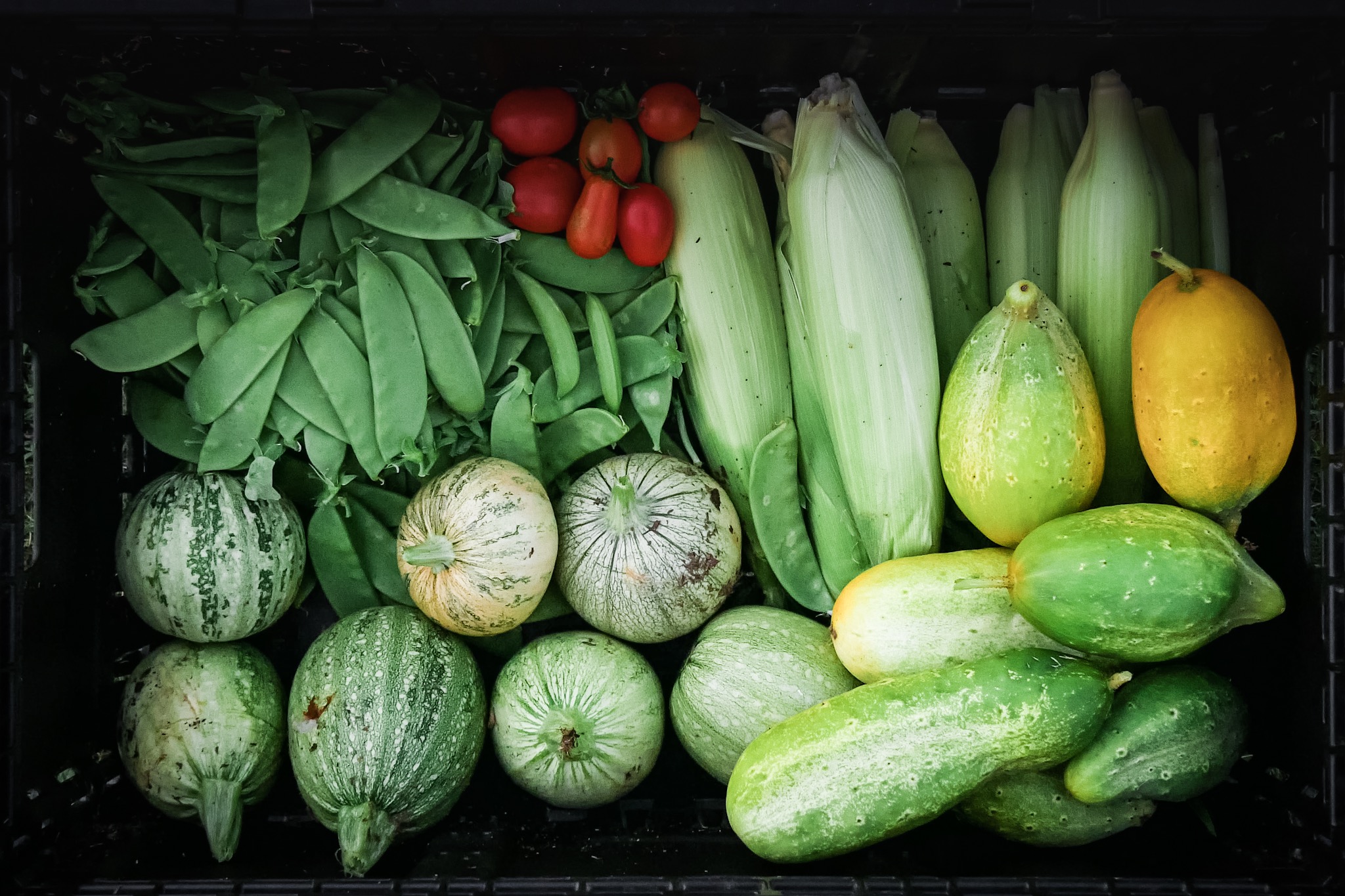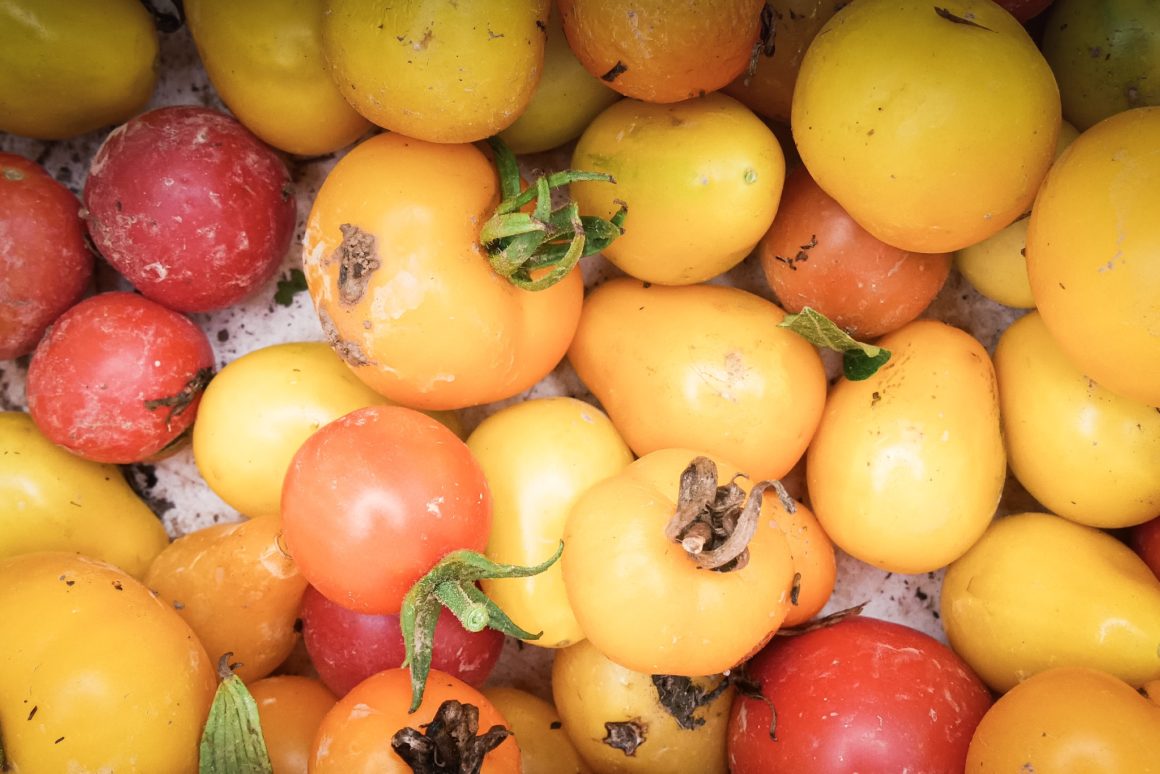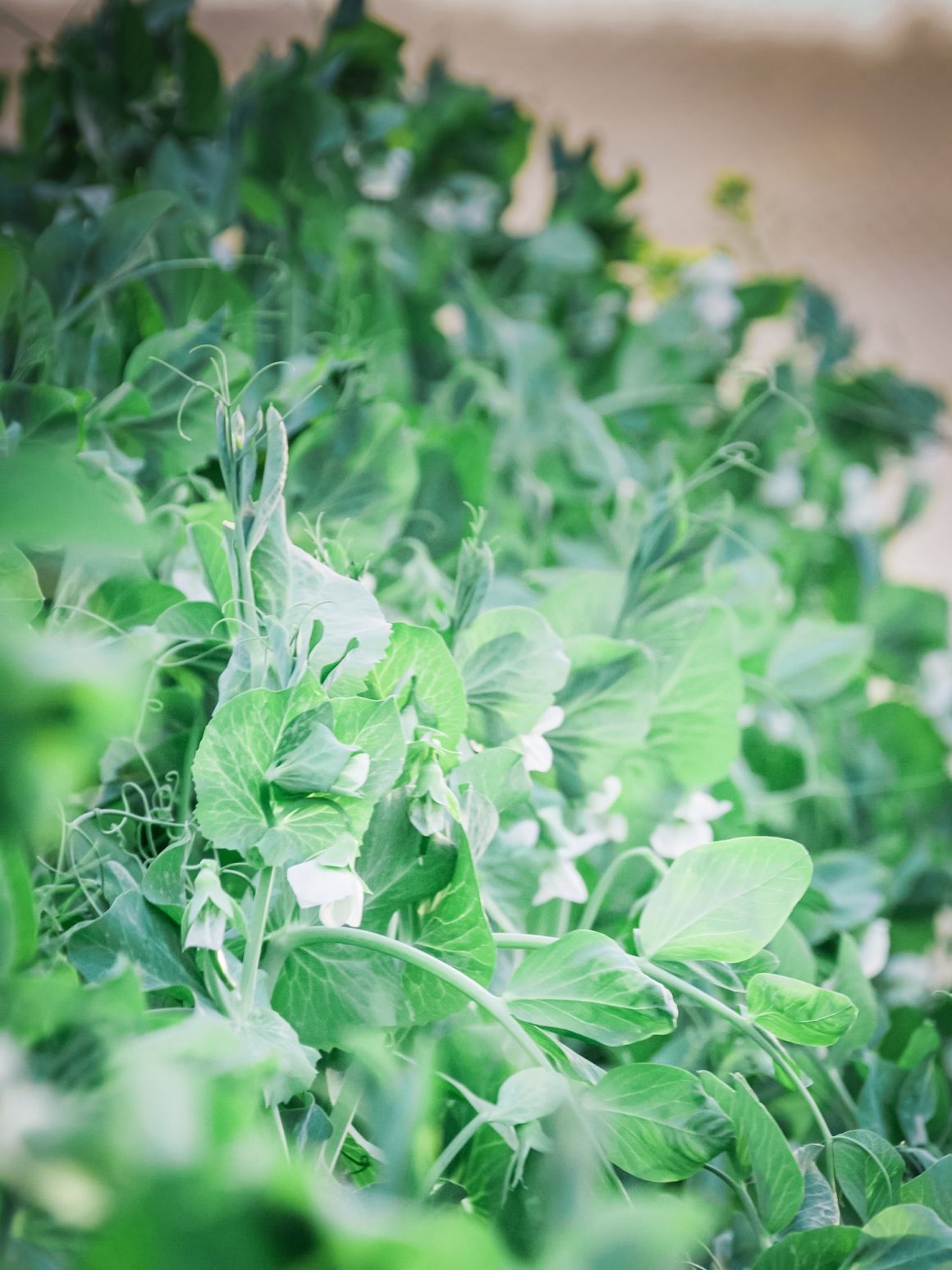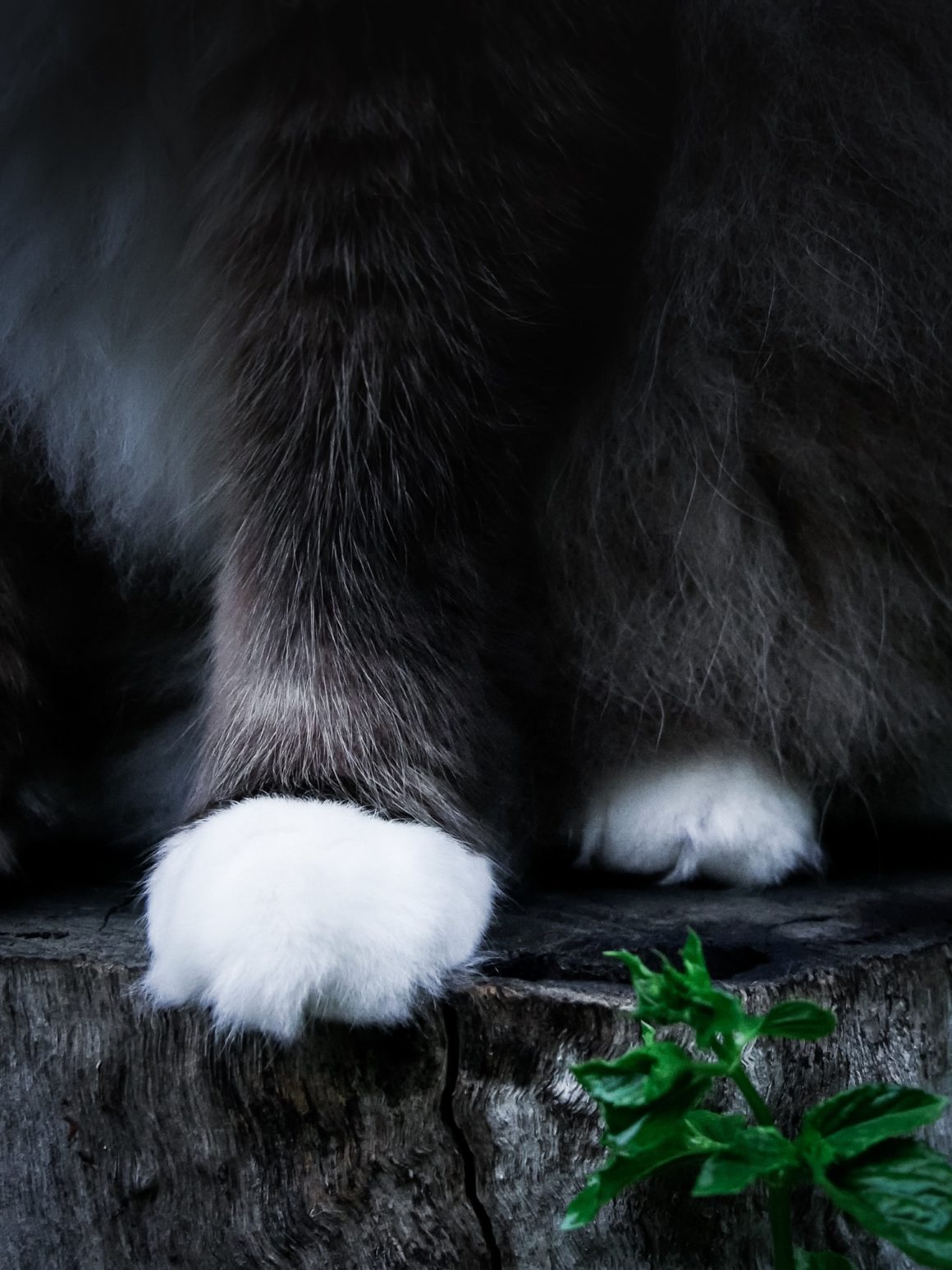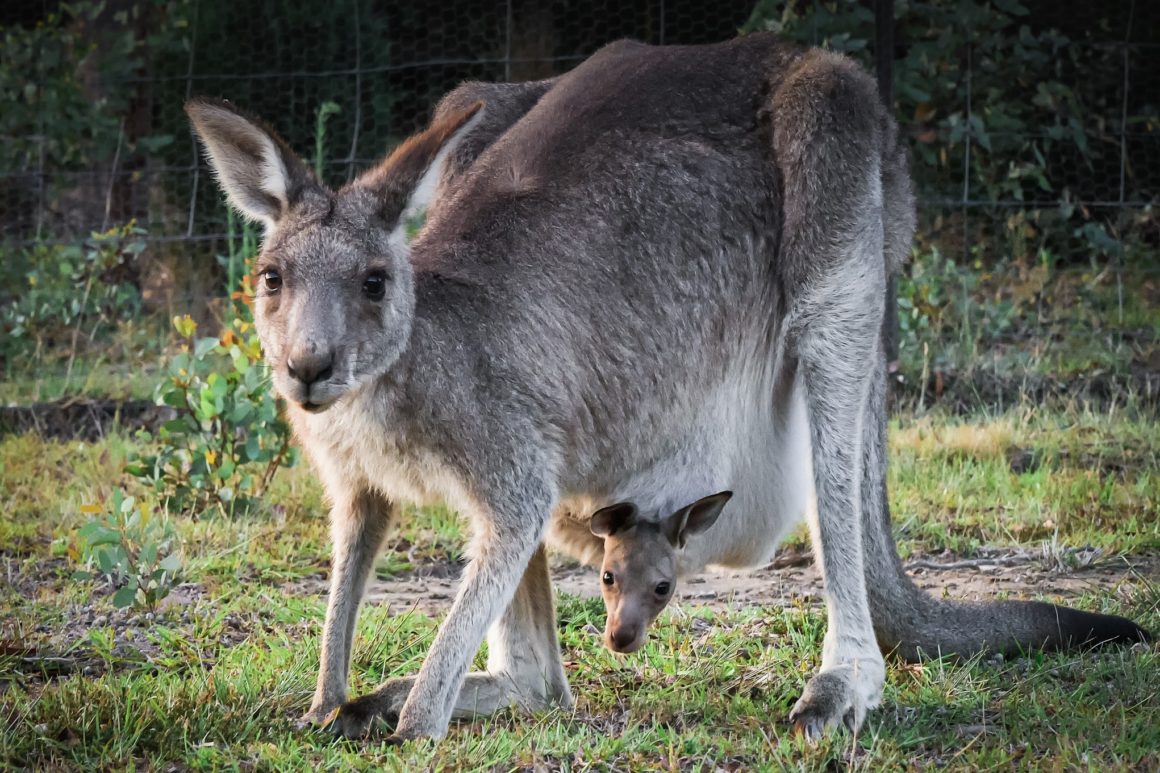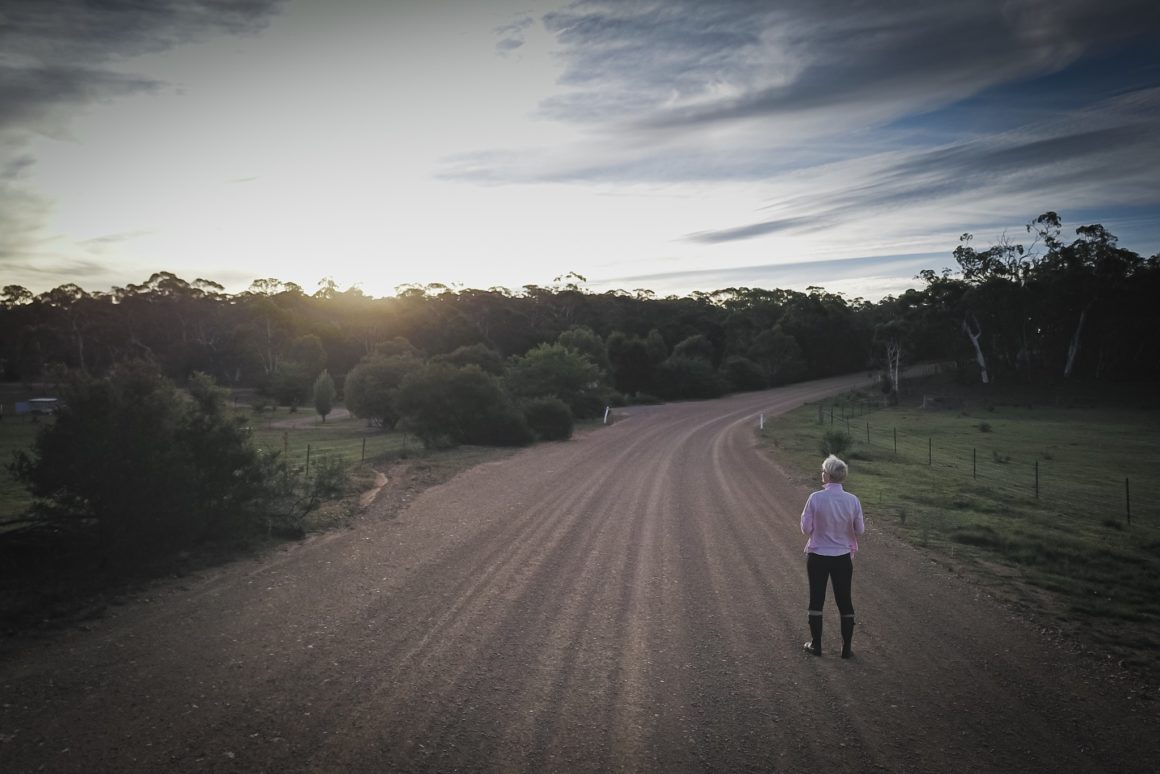DISPATCH
Coiled on my lap, Melody quietly swallows the warm milk from the bottle I hold in my hand. I look up from her sweet little face to watch the wind make the trees dance. It’s been two weeks since I started volunteering at Tiandi Wildlife Sanctuary. It is mid February and it is very hot. Braidwood is a small, charming old style village one hour from Canberra in the state of New South Wales. The landscape is divided between desert plains where cows graze and small islets of Eucalyptus. From Braidwood, drive about twenty minutes north and you arrive at Tiandi, a wildlife sanctuary dedicated to the survival of kangaroos and possums. Two white ponies, a few sheep guarded by an alpaca, chickens chatting, a dam where about twenty geese and ducks spend their days, some roosters, a beautiful vegetable garden, a house on stilts, a few greenhouses where grow salads, herbs and flowers and some snakes, we are in Australia after all. All surrounded by Eucalyptus. I liked the place at first sight. After two months of work in the blueberries I needed rest. A return to a quieter pace and a certain loneliness. Surrounded by Eucalyptus and meadows and without too many neighbors around, Tiandi exudes a special atmosphere.
“I saw the word Tiandi somewhere, years ago,” explains Julia, “and I told myself that the day I would have my own little place, I would call it Tiandi.” Of Chinese origin, “tiān dì” (天地) means “heaven and earth”, “world”, “field of activity”. With a different writing “tián dì (田地) means” agricultural land “,” cultivated land “. A name that corresponds to the little paradise created by Julia and Martin. When they bought the property, 14 years ago, there was nothing. They built a small cabin, then a beautiful house designed by Julia. The little cabin is now a rental farmstay. A farm shop, a shed and a small house housing the volunteers have since been built and pretty gardens and vegetable gardens flourish with the seasons.
Like all farms in Australia, Tiandi largely generates its own resources: rainwater is collected in large reservoirs, some of the electricity is generated by solar panels and farm animals and vegetable provide the majority of the food resources. Which means that in case of drought, a common situation in Australia, life becomes complicated. Irrigating plantations, watering animals, providing drinking water and doing housework (kitchen, shower, washing machine, etc.) all depends on the level of rainwater collected in the tanks. “Once, we had no more water in the tanks,” Julia told me. “We had to bring in a tanker truck that filled us barely a third of one of our four tanks.” It cost an exorbitant price. For a ridiculous water level. Listening to Julia’s story, I really understood how precious water is. As a French woman who was raised in town and village, I have never really been faced to the impact that drought or lack of drinking water can have on people. But since I arrived in Australia I am constantly confronted to it.
But one of the greatest benefits of living in the countryside is the ability to grow your own fruits and vegetables organically. Corn, salad, peas, kale, cucumber, eggplant, zucchini, tomatoes, herbs, peppers, carrots, pumpkin, potatoes, watermelons, orchard fruits, etc. Tiandi’s vegetable garden is a gold mine food and a delight for the taste buds. The corn has a sweet taste that I have never tasted before. I swallow fresh peas as snacks at any time of the day. The watermelon is of incomparable freshness. Everything tastes better than the fresh foods found in the supermarket. But the maintenance of this Garden of Eden requires a lot of work and attention. Martin spends half of his time watering, replanting and monitoring the evolution of plants. Climate change, seeding too late, insect invasion, everything is subject to concern especially when taking care of a garden in a natural way.
Taking care of a wildlife sanctuary dedicated to the rescue and release of native animals it is showing incredible altruism. Despite the destruction of the natural habitat and the killing of kangaroos, possums, wombats and other native animals on the roads and through hunting (organized or unorganized), the Australian state offers no financial assistance to hundreds of small sanctuaries spread across the country. Julia spends her days caring for her little proteges, spends large sums of money on food and veterinary care, consumes liters of water in a washing machine without any support in return. Just out of love and respect for those incredible animals around us. Despite some of the difficulties that this lifestyle may raise, Julia and Martin are resourceful and inventive. Martin is a professional painter, Julia creates natural skincare products, the cottage generates a fairly regular income, garden vegetables, eggs, honey are sold in the farmshop, at the supermarket in Braidwood or at other retail shops. They also have a foodvan that they bring to festivals to sell homemade food. And volunteers from all over the world come to help Tiandi’s operation. “We’ve been part of the helpX network for five years,” says Julia. “Apart from maybe a few weeks here and there, we have people all year round.” HelpX is a global program used by travelers based on volunteer work in exchange for free accommodation and food. In my opinion, this is one of the best things that exists for people who travel. It’s a great way to visit a country on a budget, meet locals, get involved in culture and learn constantly. Without the volunteers, managing Tiandi would be a titanic job.
“I did not really choose to take care of kangaroos. They are the ones who chose me, “Julia tells me when I ask her why her refuge is dedicated to kangaroos and not wombats. “When people started to know about the sanctuary, they started bringing in the injured or abandoned animals that they found and they were mainly kangaroos.” Caring for kangaroos and wombats involves two rather different systems and an existing wombats refuge already settled the other side of Braidwood, Julia decided to specialize in kangaroos. Added to these are the possums, which do not require a lot of work and a few rare Sugar Glider (small flying marsupial), impossible to refuse with their tiny cute face.
For me who work here as a volunteer, my day begins by opening the shelters for chickens, geese and ducks. Fill their water and grains and harvest the eggs. Then I get Zena’s empty food bowl, the possum in pre-release. Zena’s mother was attacked by dogs and died of wounds. Zena was saved by locals. Zena spent 3 months in the house. Since a week she has been put in a large outdoor cage where local possums come to meet her during the night. This is a very important step before the release of a possum. If this one is released without the local possums having met him before, the animal will probably be killed by other possums during his first night in the wild. These small nocturnal furry balls are very territorial animals. That’s why it’s important to go through the pre-release stage. Apart from ensuring that they have food, the possums do not require much work.
I then pick up some fresh grass for the kangaroos and water the greenhouses where the seedlings, herbs and salads grow. Then comes the turn to feed baby Kangaroos. A bottle of warm milk for everyone. In Australia, a baby kangaroo is called a “joey”. At the beginning of my stay, there were eleven joeys to take care of. Dahlia, intrepid asocial (red-necked wallaby, 5-6 months, road accident) stays inside the house. At this age, in wild, the little joey spends most of his time in his mom’s pouch. But Dahlia does not have a mother and a well-marked personality. Julia may try to leave her in her substitution pouch(cloth bags hanging around the house), the young swampy prefers to hop around and nibble constantly. Bentley (eastern-gray kangaroo, 1 year and a half, road accident) is a small, fragile joey with a broken tail. He is not very active, very gentle and prefers to spend his days in his pouch. With his so tender eyes, he can melts anyone. On the closed outdoor terrace is Melody (eastern-gray kangaroo, 1 year and a half, found alone in the bush). She arrived at Julia’s house when she was “pink”, which means a tiny baby without hair. Melody is blind on the left eye and has cataracts on the right eye. She moves slowly and awkwardly. She is very sweet like Bentley and she’s probably my favorite. Joshy and Jimmy are the best friends in the world. Joshy is a mischievous swamp wallaby and Jimmy is a red-necked wallaby with a red coat like a fox. They are one year old and arrived at Julia’s home two months ago to be released. They were raised “from pinky” in another shelter. They are always together, sleep in the same pouch and love caresses. Prinnie (red-necked wallaby, 14 months old, her mom got stuck in a fence) and Maya (swamp wallaby, 14 months, recovered from the pouchof her dead mother) are a little older and more distant. Prinnie is not afraid of anything and Maya is scared easily. And finally the last of the “youngsters”, Hobo is a 14-month-old swamp wallaby, who has come with Jimmy and Joshy and who likes to escape whenever he gets the chance.
In a small enclosure adjacent to the house are Zoro, Alvin and Chino. Zoro is a swamp wallaby (18 months old, caught trapped in an orchard) that will soon be released. He is difficult to take seriously as his clumsy behavior is subject to laugh. Alvin (3-year-old eastern-gray, his mother was killed by a bus driver while he was still “pink”) and Chino (2-year-old wallaroo, rescued by a citizen while her mother was killed by a car and who took care of her for two months without realizing that she had broken jaw) are almost adults. It has been a long time since they should have been released, but their respective conditions prevent them from doing so. Alvin, a quiet force who loves hugs, is blind and despite Julia’s attempts to teach him to go outside, it does not work. And Chino, big black eyes and a superb coat, has a malformed jaw because of her accident. So feeding is a bit difficult and she can not graze grass.
“You fall in love with each one of them,” Julia tells me, and it’s hard to not agree looking at their beautiful little faces. And it’s not every day in Australia that I have the chance to take care of little joeys! Of course, not everything is always perfect. It is necessary to clean the poo every day, to be careful of the powerful legs when handling the small ones and to face the unforeseen of life. It’s been a week since Hobo disappeared. He decided to free himself and set sail one morning. I just have to hope that he gets out without worries. And then death hit us. Sudden and relentless. Bentley has left us. Saturday, February 17 at night, the little ball of fur fell asleep and did not wake up. It had been a few days since he was not eating a lot. “It destroys your heart every time,” Julia told me, her voice broken. I nod, my heart aching, having a hard time realizing that the little ball of clumsy hair I’ve fed and loved in recent weeks has gone. But it’s hard to know what’s wrong with kangaroos. The eastern-gray are also known to be fragile. And then the very limited number of veterinary wildlife does not help.
Last night shots rang out. At each shot, I felt like my life was suspended. « Please, not Hobo.” “The shot probably missed the animal.” Thoughts about kangaroos did cross my mind. Part of the Australian population, including one of Julia’s neighbors consider that wild night hunting is the solution to regulate the stupid and cumbersome animals that are according to them, the kangaroos. So the solution is to go at dawn on a 4×4 through the bush and illuminate the environment with big spotlights. It is well known, the Kangaroos stop in front of the light. (Normal for a nocturnal animal). Perfect for flushing and shooting them without distinction. Male alpha, female and joey, everything.
This massacre of the population of kangaroos, we do not hear much about it in Australia. It is certainly not very good for tourism to evoke the slaughter of the national symbol. Proponents of this barbaric practice point out that kangaroos invade pastures and come to eat the food of farm animals. “They are a pest”. A contradiction given the native nature of kangaroos in Australia. So yes, the animals come to graze the meadow grass but the problem does not come from them, it comes from us, human society. With the establishment of intensive livestock farming and the destruction of natural areas, landscapes are transformed into meadows. Green and deforested areas as far as the eye can see. Kangaroos know that feeding on this big green space is easy. And the reproduction follows. This is why despite the massacre that is not the right solution anyway as it is inhumane, the population of kangaroos fortunately does not decrease that much.
I look at Melody and her way of moving, slightly inclined on her right side, where she can still distinguish some forms. I watch her ears move according to the sounds, her front legs still so small and I wonder about the consequences of this killing on the population of kangaroos. This animal live in bands where lot of knowledge that most of us do not even know is shared. Eliminate some of this knowledge and the learning and organization of their society is impacted. What impact does the irresponsibility of humans have on the kangaroo population today? And this is not limited to kangaroos. All over the world, native and introduced animal populations, environments, oceans suffer from the disrespect and brutality of the human. What can I do to change things?
The next time I see a kangaroo (or other animal) on the side of the road, I will stop and check if a little joey was left to die alone without any compassion.* Next time someone boasts of killing kangaroos or treating them as “pest,” I will raise my voice against this bunch of nonsense. And then I will continue to drive slowly at dawn and at dusk. I will continue to treat them with respect and wonder. These are just tiny actions on a global scale. But all change begin with small steps.
* If you find a small joey (or other animal) on the side of the road, put it in a dark space (bag, box, etc.), do not make too much noise, try to give him something to drink, honey or sugar (put this on your finger and spread on his gums). And contact Wires, wildlife rescue: 1300 094 737.

